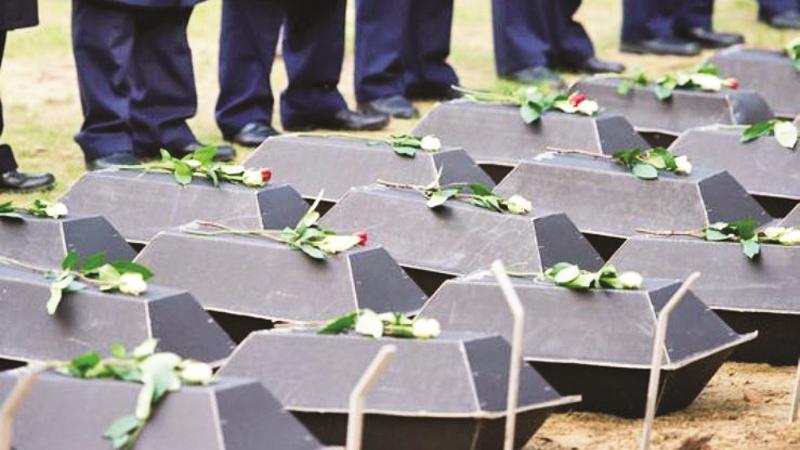
"The dearest place on this earth, for me, is the patch of grass beside my parents' grave." So goes a 19th-century German dirge describing a family's last resting place.
In times of globalization, however, people tend to be more mobile and families often live far apart, making it difficult to tend to a family gravesite. In addition, a traditional burial and years of maintenance of a grave are costly. As a result, more than one out of two people in Germany these days opt for cremation and an urn burial.
"Green burials" are slowly gaining ground around the nation to accommodate people who want to tread lightly, even in death. Advocates say more public attention has been paid to green burials in the last few years. (June 20) AP
In several European Union countries as well as the United States, families can take home the cremated remains of their loved ones. While many Germans might prefer that choice as well, it is forbidden in Germany. According to German burial law, the remains must be buried in a cemetery or a specially designated area. Many funeral homes also offer burials in nature, but these often then take place in other countries.
Cremated remains in urns can be buried in forests, or the ashes can be scattered at sea. Both are popular, as is scattering the ashes in mixed fruit orchards. The FriedWald cemetery outside Berlin offers tree gravesites. Switzerland allows for scattering ashes or burying urns on mountain pastures, among craggy rocks and in rivers.
Are cemeteries going out of business?
"About a third of the cemeteries in Germany won't continue to exist in their present form five to ten years from now," said Judith Könsgen of the German Cemetery Association. Urns only take up about one tenth of the space required for a casket. As a result, almost all cemeteries have swathes of unused ground surfaces. They suffer from a slump in earnings despite a steep rise in burial fees, Könsgen said, adding that city administrations are not allowed to cross-subsidize cemeteries with funds from other sources. At the same time, cemeteries' fixed costs remain high.
But Michael Albrecht of the Association of German Cemetery Administrators said that while there are no statistics at the federal level, he hasn't heard of a single cemetery forced to shut its gates over the past years. Until about 2040, Albrecht expects there will be more than 1.2 million deaths per year in Germany. With interment periods of 15 to 30 years, change is slow to come to cemeteries anyway, he adds.
Greener, more flexible
Bonn law professor Tade Spranger urged German cemetery administrations to be more flexible, arguing that much is forbidden, for instance "planting certain plants on graves or placing toys on children's graves." And some cemeteries don't allow burials on Saturdays, even though relatives might live far away and need the full weekend to travel to a burial.
"If they're not flexible, the administrations will find they are digging their own graves," Spranger said.
Some towns are also trying to be more flexible when it comes to environmentally friendly burials. Planegg, a town southwest of Munich, is mulling suggestions by an expert to plant a mixed fruit orchard on its premises and to offer tree and meadow interment.People are increasingly concerned about the ecological compatibility of burials, and many are opting for urns made of materials that easily decompose, such as felt or wood. In its Green Line range of products, Hebenstreit & Kentrup, a funeral home in Bonn, offers headstones and plaques crafted of local stones, seasonal flower decorations and memorial cards made of uncoated paper.
Quiet spaces
Increasingly, city planners see cemeteries as natural spaces where both flora and fauna can develop in a protected environment. Cemeteries are a "quiet alternative to highly frequented public parks," a study by the German Federal Environmental Foundation (DBU) found three years ago. According to the survey, visitors use the space to read, walk or sit in the sun. Such graveyard leisure activities are more common in cemeteries that "abut to residential neighborhoods and are easy to reach on foot."
DBU project manager Martin Venne said that is a great opportunity for cities and municipalities. Three out of four of the cemetery administrations interviewed for the foundation's survey said they have already put in place measures to help sustain biodiversity, for instance by installing nesting aids for birds. Cemeteries may be eternal resting places, but it seems the places themselves are evolving.
- USA Today
